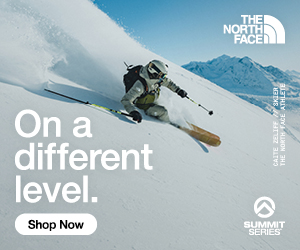When it comes to injuries, three letters spell disaster for skiers.
The ACL – anterior cruciate ligament – keeps your knee stable when pivoting or moving sideways. When I tore mine skiing in the USA in 2024, I knew immediately. There was the unmistakeable “pop”, a buckling leg, and my crying crumple to the ground. A banana boat ride downhill and an emergency care visit confirmed my worst fear.
“You’ve ruptured your ACL,” the doctor said with the empathy of an unbranded cereal box.
So began my 13-month journey back to skis.
The most common knee injury in skiing

If you ski and you “do a knee”, it’s highly likely to be an ACL tear. Research has found ACL injuries are the most common knee injury for skiers, with at least 20,000 skiers sustaining one every year in the USA. It’s one of the reasons you should be eagle-eyed with the fine print when choosing travel insurance.
Rehabbing an ACL takes a minimum of 9-12 months. This finnicky ligament struggles to get enough blood supply so while muscles around the knee can get strong quickly, the process of your body repairing it or remodeling a surgical graft into an ACL is slow. There’s a high risk (as high as 20 per cent) of re-tear. Matildas legend Sam Kerr had surgery a few weeks before me, and she is not back playing football yet.
Up to 90 per cent of ACL injuries that are judged as suitable for a bracing protocol may heal without surgery (note many are unsuitable). Unfortunately, I discovered my little ligament ends had blasted so far apart they had no hope of reuniting on their own.
The long road of ACL rehab

“Oh, that’s normal,” my surgeon said when I reported my pain 10/10 upon waking from surgery. “We’ve drilled holes into your leg bones, cut a piece of hamstring out, and stapled it through your knee. It should hurt!”
Rehab started while I was still zonked on painkillers, with mobilisation exercises day one post-op. The intensity ramped up a few weeks later to try and regain my weakling quad muscle that had atrophied shockingly fast. Over the following months, I gradually returned to running, lifting heavy, and plyometric drills. I spent six months making ice like a snowmaking machine, wrapping bags around my knee and urging the swelling to go down.
But as tough as this injury is on your body, the mental challenge is arguably harder. As a sports journalist and active person whose social circles are largely tied to those things, I was lost at first. The best comfort I received was from athletes reaching out via social media to share their experiences having gone through the same thing, sending tips like, “ice the hamstring more than the knee” (a gamechanger if you have a hamstring graft!).
The comeback

With my physio’s approval, I set a goal and booked my return ski trip. I chose my destination – Steamboat in Colorado – for its famously soft champagne powder and predictably smooth corduroy. Dubbed “Ski Town USA”, Steamboat is home to more Olympic skiers than anywhere else in America. I had been coached thoroughly through the other parts of my rehab, so for my first day skiing I wanted to ski with an instructor who had worked with athletes returning from knee injuries. Steamboat had plenty.
I bought a DonJoy brace to wear, which was light, comfortable and never constrained my movement. While Australian physios have mixed opinions about wearing a brace after ACL recovery, research has found they may reduce risk of re-tear in skiing (they can be unwieldy in other sports), and American doctors recommend them as a matter of course.
In the month before flying out, I did four 30-minute sessions at Off Piste, the indoor ski training centre in Sydney. This helped me recall the muscular feeling of skiing and boosted my confidence. But it’s a different beast to stand on top of an unfamiliar mountain at elevation and send it downhill.
“You ever made pancakes, Kate?” asked my instructor, veteran Steamboat ski coach Chuck O’Connell, as my nervous heart rate bonked chaotically in my ears at the top of my first run.
“Lemme ask – is your first pancake the best one?” he continued. “Nope, never. It’s the same with skiing. We’ll get better as we make more runs.”
My first turns on mellow blue slopes weren’t pretty. I was slow and freaked out by moguls, black diamonds or going off-piste. My surgeon had told me to expect a bit of swelling – “first season syndrome” – for which I iced my knee each night. But my mind knew I had put in the work, that my body could handle this. Day by day, the pancakes got prettier.
By the end of two weeks in Colorado I found myself whooping through two feet of powder, in a whiteout, barely thinking about my knee.
I’m still not entirely carefree, but it’s probably a good thing given my gung-ho attitude was what got me injured in the first place. I’ve learned that I’m not invincible – but I’m stronger and more resilient than I ever was.
Tips for ACL recovery
- Ice – you’ll need tonnes of it. Not an ad, but Lydia Lassila’s Body Ice packs were the best for me as they stayed the coldest.
- Have a little backpack to carry things around when you’re on crutches. Pack your sippy cup or water bottle in it (glasses are guaranteed to spill).
- This book by physiotherapist Jess Cunningham was really informative and a great comfort for me. It shares the first-person stories of 13 Australian athletes who have returned to sport after ACL injuries, including skiers Anna Segal and Russ Henshaw.
- Pick a good physio, who knows knees and is experienced working with ACL patients. I worked with Sydney Sports Physiotherapy, who share the same building as my surgeon as well as Dr Tom Cross who invented the Cross Bracing Protocol for ACL injuries.
- If you choose to ski with a brace (I personally found it non-cumbersome and it helped my confidence), the DonJoy or Bauerfeind ACL braces are most recommended by physios. Don’t buy online, go in-store and get it fitted properly.
- When you return to ski, set your DINs lower than previously – you’d rather pop out of your skis than go through this again.
































